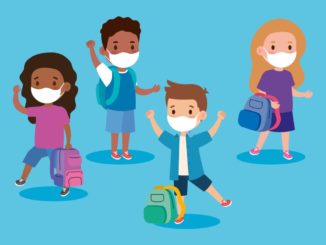
As reported by BBC news, school staff do not have a markedly higher risk of infection than other working-age adults, a study suggests
The number of staff testing positive for COVID antibodies increased by a similar percentage to their peers while schools were fully open. Experts described the findings as “very reassuring”, and suggested efforts by schools to control infections were working. They said this did not mean teachers were at zero risk, however.
Testing positive for COVID antibodies indicates someone has had the virus in the past. In December, 15% of teaching and support staff tested positive for antibodies compared to about 18% of people of working age in the same local authorities – giving them about an average risk for their age. But the working-age population includes people not in work and working from home, as well as those going into work.
It would be “naive” to think teachers going into schools wouldn’t have higher risks than those working from home, according to Dr Shamez Ladhani who is leading research for Public Health England. His team, from Public Health England, the Office for National Statistics and the London School of Hygiene and Tropical Medicine, tested staff and students at a sample of schools for current and past infections.
Anyone working outside their home is likely to have some elevated risk, the researchers explained. However, teachers’ risk was not substantially higher compared with people working in other settings.
Between 25% and 50% of hospital staff had antibodies, according to various studies, while in care homes that at least one COVID outbreak, two-thirds (66%) of staff had antibodies by the end of the first wave. In contrast, the proportion of school staff testing positive for antibodies rose to 15% from about 12% between November and December 2020. Given schools were completely open during this period, “you would expect much higher antibody conversion if it was a high risk environment,” Dr Ladhani said.
He said the long-term harm of keeping children out of school was “enormous”.
“The benefits outweigh the risks, but the risks are not zero,” he said.
It was not possible to tell from the study whether any infections detected had been caught in school or in the wider community, or whether teachers were catching the virus from pupils or other teachers.
“The very fact we’ve not seen a high antibody rise when at school suggests staff were not being infected [at high rates] during that period”.
He said schools had never been in a better position to think about re-opening. And it was a testament to the infection control efforts of schools and their staff, one of the study’s lead authors Prof Sinéad Langan added.
“Schools and their staff have made a huge effort to protect themselves and their students by implementing COVID-19 control measures to try and stop infection entering the school site, and reduce on-site transmission,” she said.
It was announced last week that no occupation would be prioritised for vaccination – instead people doing different jobs would be offered the jab according to their age or health status. That’s because those are the biggest factors driving whether someone will get very ill or even die after being infected.
A relatively small proportion of COVID deaths have been in the working-age population. Two-thirds of deaths in under-65s were in men and the most common occupations of those who died were in caring, service jobs and “elementary occupations” like cleaners, shelf-fillers and hospital porters.



Be the first to comment